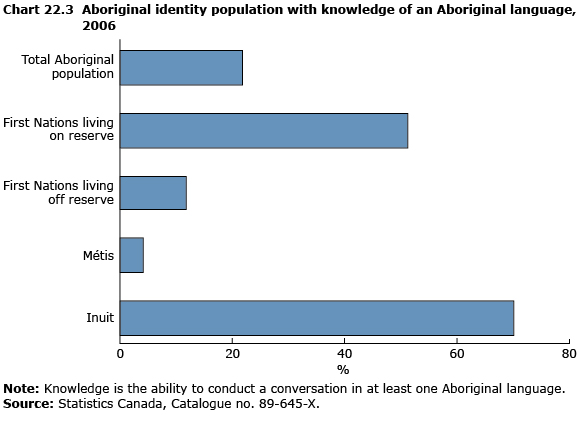Study of Aboriginal languages increasing
Archived Content
Information identified as archived is provided for reference, research or recordkeeping purposes. It is not subject to the Government of Canada Web Standards and has not been altered or updated since it was archived. Please "contact us" to request a format other than those available.
Related information
Over the past 100 years or more, at least ten once-flourishing languages have become extinct. However, this trend is being offset as more people study an Aboriginal language as a second language.
In the 2008/2009 academic year, 48,000 students were taking an Aboriginal language course, with most (29,000) doing so in British Columbia. From 2002/2003 to 2008/2009, the number enrolled across Canada increased 3%. These figures include Aboriginal and non-Aboriginal students at off-reserve, publicly funded schools (except in Alberta, where data were not available).
In 2006, the First Nations languages with the largest number of speakers were Cree (87,285), Ojibway (30,255), Oji-Cree (12,435) and Montagnais-Naskapi (11,080). In 2006, 29% of First Nations people said they could converse in an Aboriginal language; half (51%) of those living on a reserve could.
- Date modified:

